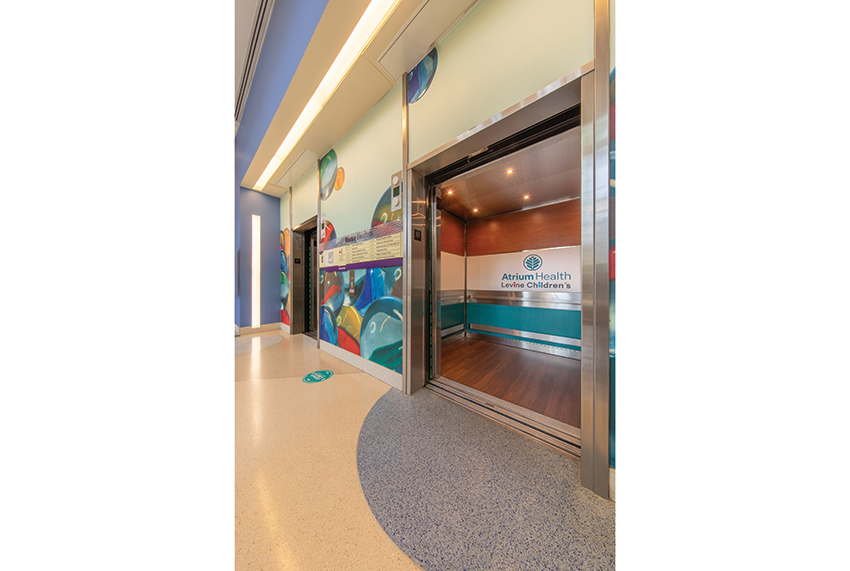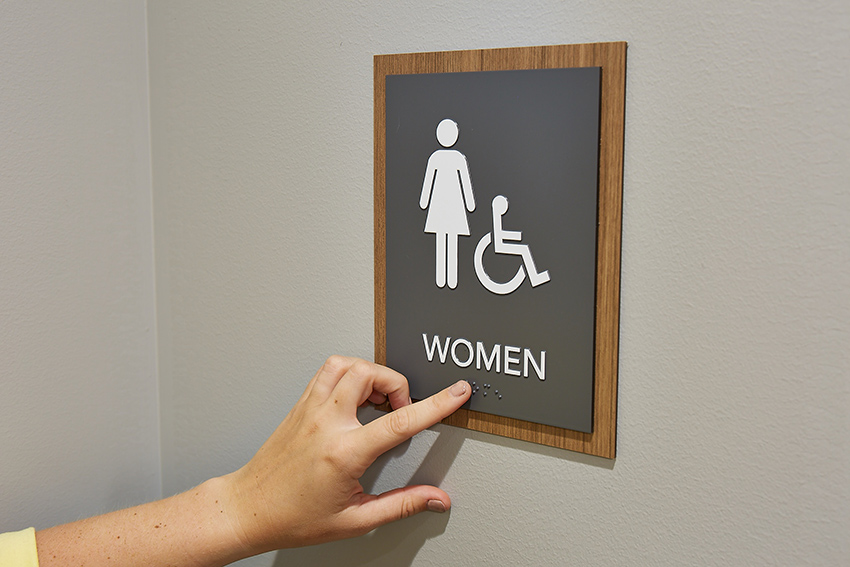Going Above and Beyond with ADA
 1 AIA LU/HSW; *1 ADA State Accessibility/Barrier-Free; 0.1 ICC CEU; 0.1 IACET CEU*; 1 AIBD P-CE; AAA 1 Structured Learning Hour; This course can be self-reported to the AANB, as per their CE Guidelines; AAPEI 1 Structured Learning Hour; This course can be self-reported to the AIBC, as per their CE Guidelines.; MAA 1 Structured Learning Hour; This course can be self-reported to the NLAA.; This course can be self-reported to the NSAA; NWTAA 1 Structured Learning Hour; OAA 1 Learning Hour; SAA 1 Hour of Core Learning
1 AIA LU/HSW; *1 ADA State Accessibility/Barrier-Free; 0.1 ICC CEU; 0.1 IACET CEU*; 1 AIBD P-CE; AAA 1 Structured Learning Hour; This course can be self-reported to the AANB, as per their CE Guidelines; AAPEI 1 Structured Learning Hour; This course can be self-reported to the AIBC, as per their CE Guidelines.; MAA 1 Structured Learning Hour; This course can be self-reported to the NLAA.; This course can be self-reported to the NSAA; NWTAA 1 Structured Learning Hour; OAA 1 Learning Hour; SAA 1 Hour of Core Learning
Learning Objectives:
- Describe the concept of universal design and how the seven guiding principles can impact the health and safety of occupants in the built environment.
- Discuss the role signage plays in ADA compliance in supporting the well-being of people with disabilities.
- List the emotional benefits of incorporating biophilia into the design of signage, wall protection, and art for occupants of all ages.
- Explain how elements like cordless blinds and inclusive gender neutral bathrooms can create a more welcoming and accessible space for occupants and visitors.
This course is part of the ADA Academy

Photo courtesy of Inpro
The use of color in wall coverings can greatly promote biophilia in healthcare environments.
Architects are in the unique position today to design interior spaces that are more welcoming, safe, functional, and accessible than ever before. The definition of well-being has shifted in recent decades, and now it includes emotional health as well as the physical health of occupants. The promotion of emotional well-being raises interesting and challenging questions for architects and designers. How can we enhance the design of interior spaces and promote biophilia to bring the warmth of nature into the built environment? Can we go beyond the basic requirements of the Americans with Disabilities Act (ADA) to create spaces that aren’t just compliant with regulations but welcoming for all occupants? How can we incorporate the concept and guiding principles of universal design into projects to create safe, accessible, and healthy environments for everyone?
This article will explore the concept of universal design and explain the benefits to occupants when these principles are thoughtfully included in projects. Also, this article will dive into the Americans with Disabilities Act (ADA), providing an overview of the history, impact on the built environment, and current regulatory protections offered to people with disabilities. Specifically related to the ADA, it will provide direction on signage in commercial spaces, schools, and hospitals. Next, this article will discuss the positive aspects of specifying wall protection and murals that can calm occupants of all ages, young and old, and encourage a more meditative and peaceful space through biophilic art. Finally, we will explore some other related design elements that can create a more healthy and safe space, both emotionally and physically, for occupants. Examples such as the specification of cordless blinds to protect children; non-gender bathrooms designed to create inclusive, private, safe, secure, functional, and accessible spaces; and “emotionally safe” rooms in schools where children can express big feelings in appropriate private areas.
THE SEVEN PRINCIPLES OF UNIVERSAL DESIGN
Universal design is a principle that aims to create environments and products that are accessible and usable by people of all abilities, ages, and backgrounds. In the realm of commercial architecture, architects play a pivotal role in ensuring that their designs adhere to universal design principles. It’s important to design around inclusivity and accessibility for both legal and ethical reasons. For example, the Americans with Disabilities Act (ADA) in the United States mandates accessibility requirements for buildings around design features including ramps, handrails, elevators, parking, door width, and more. Planning for accessibility from the get-go can, at minimum, help avoid design headaches later in the process, and will prevent legal issues from arising. Ethically, a building designed in such a way that all occupants can navigate and utilize the building’s facilities independently creates a sense of belonging and empowerment.The Guiding Principles of Universal Design
There are seven principles that guide universal design, which were developed by a team of architects, product designers, engineers, and environmental design researchers at the Center for universal design at North Carolina State University and first published in 1997.1 The Center is no longer operational, but the principles established there have influenced policy, law, international agreements, and design across the world.
The first principle is equitable use, which essentially consists of the core meaning of universal design–a design that is useful to people with diverse abilities. Entryways that utilize power doors with sensors and sports arenas that have integrated and adaptable seating are examples of design for equitable use, which provides equivalent means of use for various users when identical means aren’t possible.
Flexibility in use is the next principle, which refers to design that accommodates a range of preferences and abilities for use, and one that offers choice when applicable. Scissors designed for right- or left-handed users are an example.
A third principle is simple and intuitive use for people with varying experience, knowledge, language fluency, and concentration levels. Simplicity and consistency are key. An instruction manual that utilizes drawings instead of text is a great example, as it side-steps questions about what language or vocabulary level its reader might have.

Photo courtesy of Inpro
One of the principles of universal design refers to designs that communicate messaging effectively, regardless of ambient conditions or the user’s sensory abilities. Here the restroom sign incorporates visual reference, language, and tactile (braille).
Perceptible information is the fourth principle. This refers to designs that communicate messaging effectively, regardless of ambient conditions or the user’s sensory abilities. Communications become more perceptible as they are made through more avenues. For example, a thermostat that utilizes tactile, visual, and audible cues is easier for more people to use.
Universal design also prioritizes a tolerance for error by minimizing hazards and any consequences that may come from accidental actions. One way to do that is to provide fail safe features, like a car key that is double cut so that it can be inserted into a keyhole in either direction.
Designs that require low physical effort increase accessibility, as well. This may mean various things in design function, but goals include minimizing repetitive actions and sustained effort, and allowing users to maintain a neutral body position. A sink that has a lever handle, for example, takes less effort to operate than one with a knob handle.
The final principle of universal design is appropriate size and space for approach and use of an implement, regardless of a user’s body size or mobility. A drinking fountain, for example, should have a front-facing control button and be at a height that both standing and sitting users can operate.
To bring together all the universal design principles, consider the elevator. An elevator is a great tool for people with varying abilities.
It’s equitable and flexible in its use–accessible to people of diverse ages and mobility levels. Most elevators are equipped with multiple ways to communicate information, such as light-up buttons, sounds and cues communicating which floor the elevator is destined for and if its doors are in motion. Elevator doors detect when something is in the way and will stop shutting if that’s the case, leaving some room for error. Automatic doors and simple buttons ensure low physical effort is needed from an elevator’s users. A well-designed elevator has ample room at its entry and exit points, has wide doors and a spacious interior, allowing space for navigation by wheelchairs, strollers, and other mobility aids.










